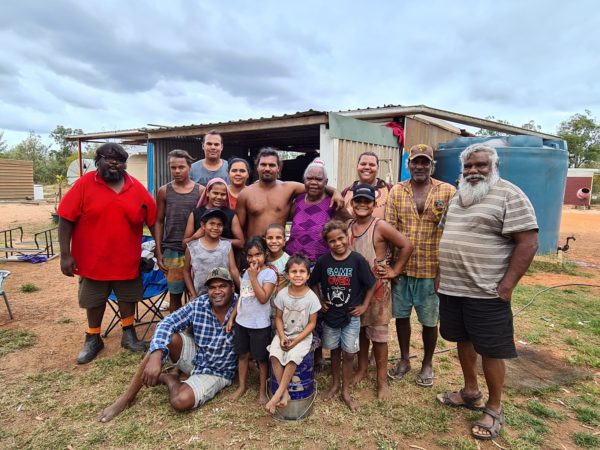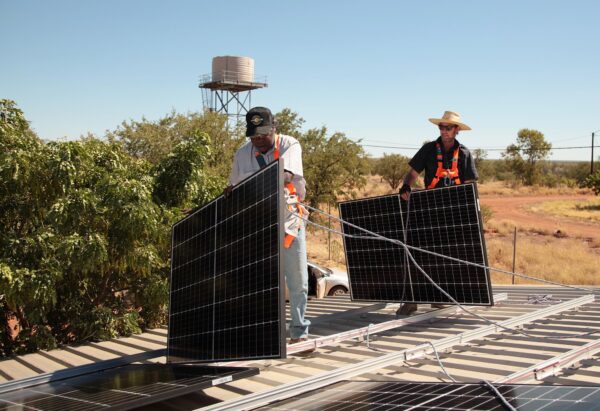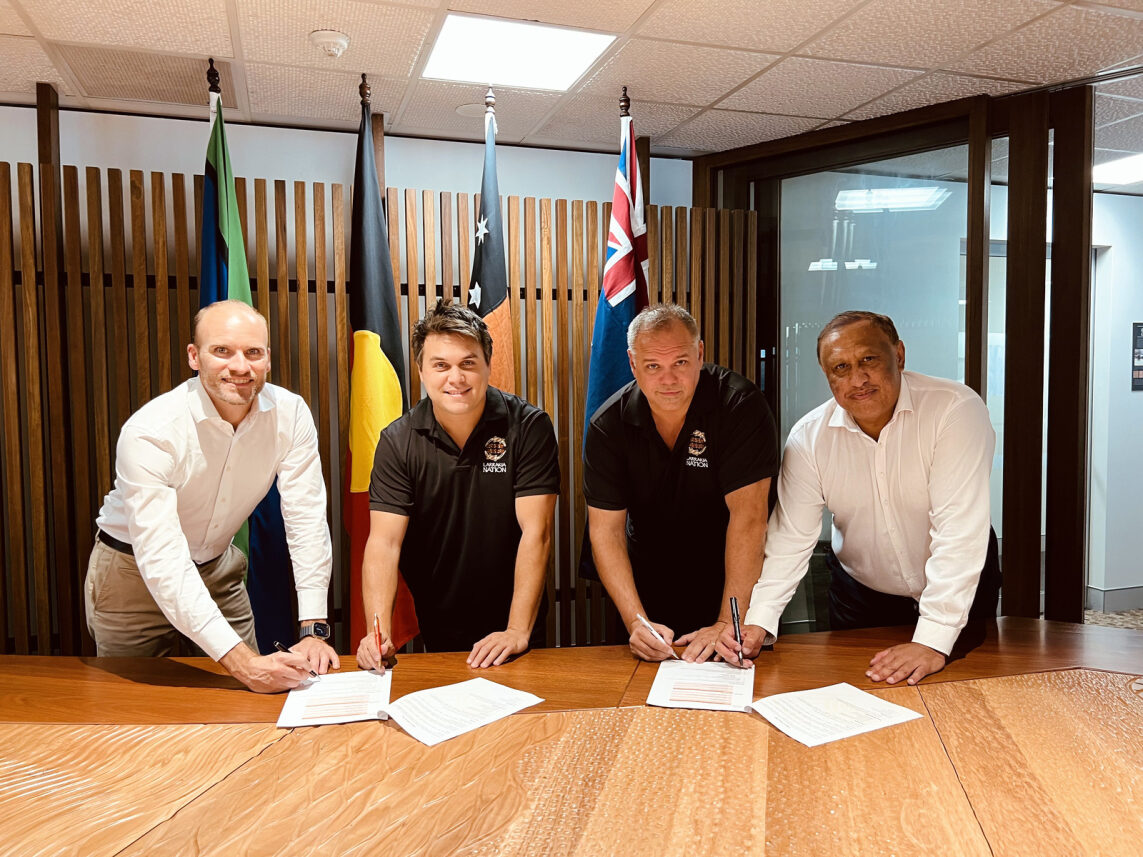Desert Springs Octopus, a majority Indigenous-owned company backed by Octopus Australia and formed in 2022, has signed agreements with two First Nations groups from Darwin and Katherine – the Larrakia Nation and Jawoyn Association.
The new partners will initially pursue solar and battery projects, including:
- 100 MW to 150MW of solar with 30 MWh to 50MWh of storage near Darwin;
- 60 MW to 80MW of solar coupled with between 5 to 10 MWh of storage for mining operation;
- 10 MW to 15 MW of solar with between 2 MWh to 3MWh of battery storage for which the Australian Defence Force is expected to be the eventual offtaker.
Desert Springs Octopus says it will pursue a near-term investment of $1 billion (USD 650 million) into grid connected renewables along the Darwin-Katherine Electricity System.
Despite its natural resources, the Northern Territory massively lags Australia in terms of its renewable energy penetration. This is due to a number of factors, including the Territory’s historic and continuing reliance on gas, an adverse regulatory system for renewable projects and higher costs since renewable industries have not yet reached scale.
Coming back to Desert Springs Octopus, the company says funding for the projects will come from a mix of wholesale, impact and institutional investors. Presumably the partners will also use the two new investment platforms set up by Octopus Australia last year, known as OREO and OASIS.
Green hydrogen projects will also be part of Desert Springs Octopus strategy in the NT, the company said – though no timelines have been given for this.

Image: Original Power
Desert Springs approach
Desert Springs Octopus (DSO) has renewable energy Benefit Sharing Agreements with the Larrakia Nation and Jawoyn Association underlying the partnership.
Octopus Australia’s Managing Director, Sam Reynolds, previously told pv magazine Australia the DSO in fact formed at the behest of Bevan Mailman, now the Co-Chairman of Desert Springs Octopus, as he was looking for a renewable partner. That is to say, the Octopus Australia component frame themselves as taking the passenger’s rather than driver’s seat, seeing their role as learning from and listening to Indigenous groups and communities.
This approach Reynolds frames as fundamental given the history of First Nations communities and lands being exploited. Octopus Australia’s former Investment Director of Energy Markets, Lumi Adisa, who worked on Desert Springs Octopus during its formation described the endeavour as building a new kind of business culture based on trust and respect.

Image: Original Power
Adding to this point, Reynolds previously noted First Nations communities can be understandably skeptical of businesses coming in and making promises. “They’ve seen a lot of people like me,” Reynolds said last year. “There’s a big history we need to get through.”
Reynolds is referring here to historic mishandling by mining and resource companies in Australia. As renewable energy rapidly becomes a dominant industry in Australia’s regions, there are fears and some red flag this history may again be repeating itself.
CEO of Northern Territory Indigenous Business Network, Jerome Cubillo, however described the Desert Springs Octopus and Larrakia and Jawoyn partnership as “a lighthouse model for others to follow.”
“This is what real economic self-determination looks like,” Cubillo said.
“We believe that starting with Benefit Sharing Framework Agreements is the key to strong and enduring relationships with Indigenous communities, and we are proud to partner with Jawoyn and Larrakia Nation,” Reynolds said.
“We are looking forward to being a genuine partner in this exciting project that aligns with our values of protecting and caring for Country,” CEO of Larrakia Nation, Michael Rotumah, aded.
The Larrakia and Jawoyn communities are connected to large swaths of Country around Darwin and Katherine, the equivalent to 25% of the UK land mass. This includes Australia’s closest major port to Asia, one critical for hydrogen export.
This content is protected by copyright and may not be reused. If you want to cooperate with us and would like to reuse some of our content, please contact: editors@pv-magazine.com.









By submitting this form you agree to pv magazine using your data for the purposes of publishing your comment.
Your personal data will only be disclosed or otherwise transmitted to third parties for the purposes of spam filtering or if this is necessary for technical maintenance of the website. Any other transfer to third parties will not take place unless this is justified on the basis of applicable data protection regulations or if pv magazine is legally obliged to do so.
You may revoke this consent at any time with effect for the future, in which case your personal data will be deleted immediately. Otherwise, your data will be deleted if pv magazine has processed your request or the purpose of data storage is fulfilled.
Further information on data privacy can be found in our Data Protection Policy.